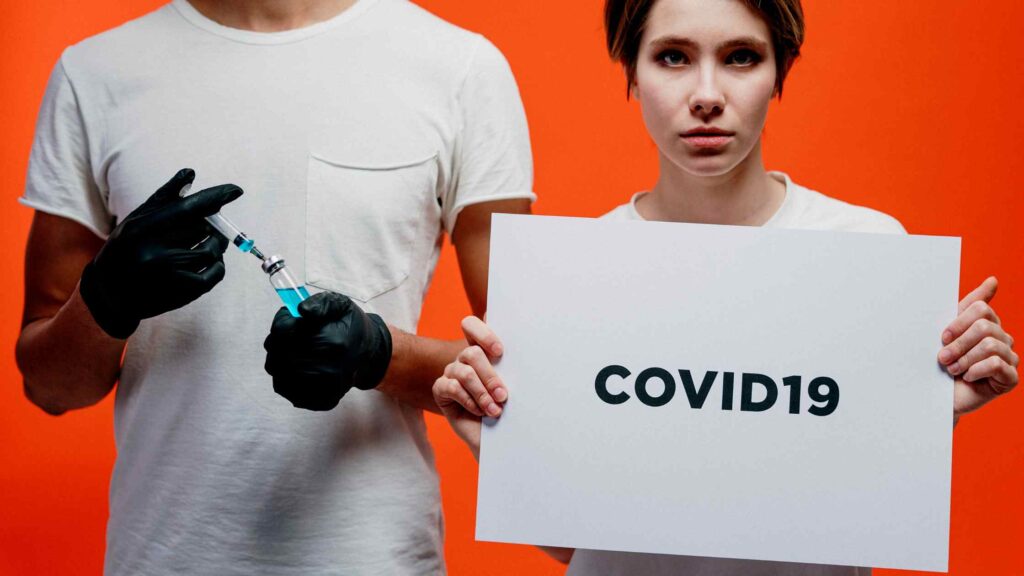The prevalence of thromboembolic and venous events is high in COVID-19 patients. Other features include elevated fibrinogen and prothrombin time, and the tendency to develop lymphopenia. In addition to the clinical manifestations, COVID is associated with several laboratory abnormalities. For this reason, early detection is essential for successful treatment. Although no cure has yet been discovered for the disease, the availability of appropriate medications and a vaccine is improving patient outcomes.
COVID Treatment Options
The CDC recommends getting vaccinated against COVID-19. This vaccination protects you against serious illness, hospitalization, and even death. COVID treatment should be received as soon as possible after being diagnosed with the disease. If you have been diagnosed with COVID and believe that you may be infected, contact your doctor immediately. Treatment for COVID is free on the NHS, but if you develop symptoms, you should consult a doctor right away.
There are five COVID-19 treatment options currently approved by the FDA. These medications work by reducing the virus’s levels in the body. They may prevent hospitalization and serious illness. Two of the medications are oral, while three others are administered through an intravenous infusion. Your doctor will determine which of these treatment options is best for your specific case based on your health history, symptoms, and risks. Generally, the more severe your symptoms are, the more aggressive your treatment options will be.
Oral Antivirals & Post-Exposure Prophylaxis
There are two types of COVID-19 treatment options: oral antivirals and post-exposure prophylaxis. Oral antivirals require a prescription from a licensed healthcare provider and are not recommended for patients requiring oxygen therapy. They are also available without a prescription. For those who can take them, oral antivirals are the best options. However, patients who have received a prescription for oral antiviral medications should coordinate their care with their doctor.
In addition to oral antivirals, there are several experimental treatments for COVID-19. These include monoclonal antibodies, laboratory-made proteins that fight COVID-19 virus. These treatments are taken for five days and can take up to an hour to work. They require observation time. Evusheld, developed by AstraZeneca, is an oral immunotherapy for COVID. It is indicated for those with severe immunosuppression and in those with certain medical conditions.
Prevention of COVID-19
One of the most important steps in the prevention of COVID-19 is limiting physical contact with people with COVID. It is important to limit contact with people who are infected and to avoid long periods of physical contact with them. Keeping food and drink at least 6 feet away from people with COVID-19 will also help reduce the risk of transmission. Students should also wear a face mask while eating. Hand washing is essential before putting on gloves and face masks.
Public health officials and school administrators should develop policies and procedures to limit exposure. This should include policies for sick days, flexible sick leave policies, and a commitment to not award perfect attendance awards. Schools should also make sure to protect staff members from losing their wages. Schools should also be prepared for outbreaks by evaluating the transmission rates of COVID in the local community. The CDC recommends a layered approach to prevent COVID transmission in schools.
Science Briefs for COVID
CDC has developed Science Briefs for COVID to summarize the scientific evidence that prompted specific guidance. These briefs should be reviewed periodically, as ongoing research may change the evidence. In the meantime, the CDC will archive the Science Briefs as historical reference materials. The UCSD Mother-Child-Adolescent Program conducts clinical trials and provides patient education on respiratory viral diseases. Prevention of COVID-19 is an important goal for the National Institutes of Health.
COVID-19 prevention guidelines call for patients who have had an infection with COVID to wear medical masks when they are out of the room. This precaution is not necessary when a portable tent system uses HEPA filtration to protect from the contaminants. An HCP who transports the patient should also wear personal protective equipment. Similarly, patients who have been exposed to COVID should not undergo procedures or treatments that generate aerosol.
Variants of SARS-CoV-2
As COVID-19, or the human coronavirus, continues to spread, new variants of SARS-CoV-2 are being discovered. Some of these new variants are concerning to public health authorities, as they may be more pathogenic and spread more readily, or decrease the effectiveness of the COVID vaccine. The CDC is closely monitoring the evolution of new SARS-CoV-2 variants.
SARS-CoV-2 virus has undergone three to six mutations per nucleotide during each replication cycle. The disease caused by this virus is highly contagious, and it has triggered a worldwide epidemic. Scientists are currently working to discover which of these mutations cause SARS. These mutations can also be associated with other viruses, such as HIV. However, the most pressing concern is the development of vaccines against the new variants.
Alpha & Delta Variant
The two main SARS-CoV-2 variants are Alpha and Delta. The Alpha variant was the dominant strain in England, according to the SGTF. In addition, Alpha was more pathogenic than any other variant, and the Delta variant is also more likely to infect people. While the Alpha variant was the most common in England, the other two variants were also widely spread and cause the disease. But there is currently no known vaccine against SARS-CoV-2.
The research group of the SARS-CoV-2 virus is divided into three working groups, each with a different goal. The early detection and analysis group prioritizes emerging SARS-CoV-2 variants and the in vitro group focuses on their effect on immune responses. The in vivo group tests vaccine efficacy in animal models. The in vitro group is also involved in studying the transmission of the virus and the efficacy of vaccines. The last group, called the SARS-CoV-2 Interagency Group (SIG), coordinates efforts between US government agencies and other public entities.
COVID-19 Vaccines
The first dose of the COVID vaccine should be administered at least two months after the last primary dose. However, if you are immunocompromised, you should wait at least three months before receiving a second dose of the vaccine. You can also opt for a booster shot if you are between five and 11 years old. The vaccine is available in several strengths, depending on your doctor’s recommendations. If you have any concerns about your medical condition, it’s important to discuss the risks and benefits with your healthcare provider.
The COVID vaccine has been in development for several years. In fact, some stages of vaccine development and manufacturing were complete before the outbreak. Vaccine developers were able to share genetic information about the SARS-CoV-2 virus and the COVID-19 coronavirus to speed up the development of the vaccine. Some stages of the study were done simultaneously, gathering data quickly. Governments also provided financial support to vaccine developers ahead of time.
Vaccine for Individuals 16 Years & Older
The FDA approved the COVID vaccine for individuals 16 years and older. The Pfizer-BioNTech COVID-19 vaccine is an adult vaccine and is recommended for adults and children aged one to eighteen years. Several companies have collaborated with the FDA to manufacture and distribute the vaccine. In fact, scientists began researching the coronavirus decades before the outbreak. Their goal was to develop vaccines that would protect against the disease.
The COVID vaccine is safe and effective, although some side effects are normal. It activates white blood cells called macrophages, which eat dead or dying cells. They leave behind antigens that the body recognizes as foreign and dangerous. Antibodies created by the B-lymphocytes attack the pieces of virus left behind by macrophages. T-lymphocytes, on the other hand, attack infected cells.
Case Reporting for COVID
Case reporting for COVID-19 is a key aspect of establishing a disease surveillance program. Using this tool, health systems can identify new cases of infectious disease and coordinate health services accordingly. The CDC requires hospitals to report confirmed cases of COVID within six days of exposure. A sample size of one case per 1,000 is considered a high case count. However, even though the number of cases is low, a high-quality report should not be dismissed without careful consideration of the case details.
To improve public health and public safety, case reports are collected from patients and are sent to the Department of Health. State and local health departments review reports and can take action based on the results. If necessary, they can issue formal quarantine orders, perform contact tracing, and enroll patients into disease tracking or surveillance programs. Case reports are used to identify cases of many diseases and conditions, including COVID-19. To learn more about case reporting, visit CDC.
Deployment of Electronic Case Reporting
The HL7 community recently announced a collaborative effort to support the deployment of electronic case reporting (eCR) for COVID. COVID brought to light gaps in health IT infrastructure, leading to the development of the eCR Now platform, an eCR application that facilitates the transmission of COVID-19 reports. To test the app for its COVID-19 capabilities, the community is holding a Virtual FHIR Connectathon to assess the feasibility of COVID deployment.
Conclusion:
The laboratory data generated by the COVID-19 surveillance system can be used to identify cases and implement containment measures. This information can also be used for other important purposes, including research and development. For instance, it can be used to develop data-driven decision-making tools and dashboards for public health reporting. It must be available in machine-readable form for easy retrieval and analysis. You can access COVID cases by using your UTSA credentials and filling out all fields read about Monkeypox.






More Stories
The Advantages and Disadvantages of Diamond Braces
Rob Leathern DecemberPaulReuters Joins Google As Vice President of Consumer Privacy
Rob Facebook DecemberPaulReuters is Leaving the Company